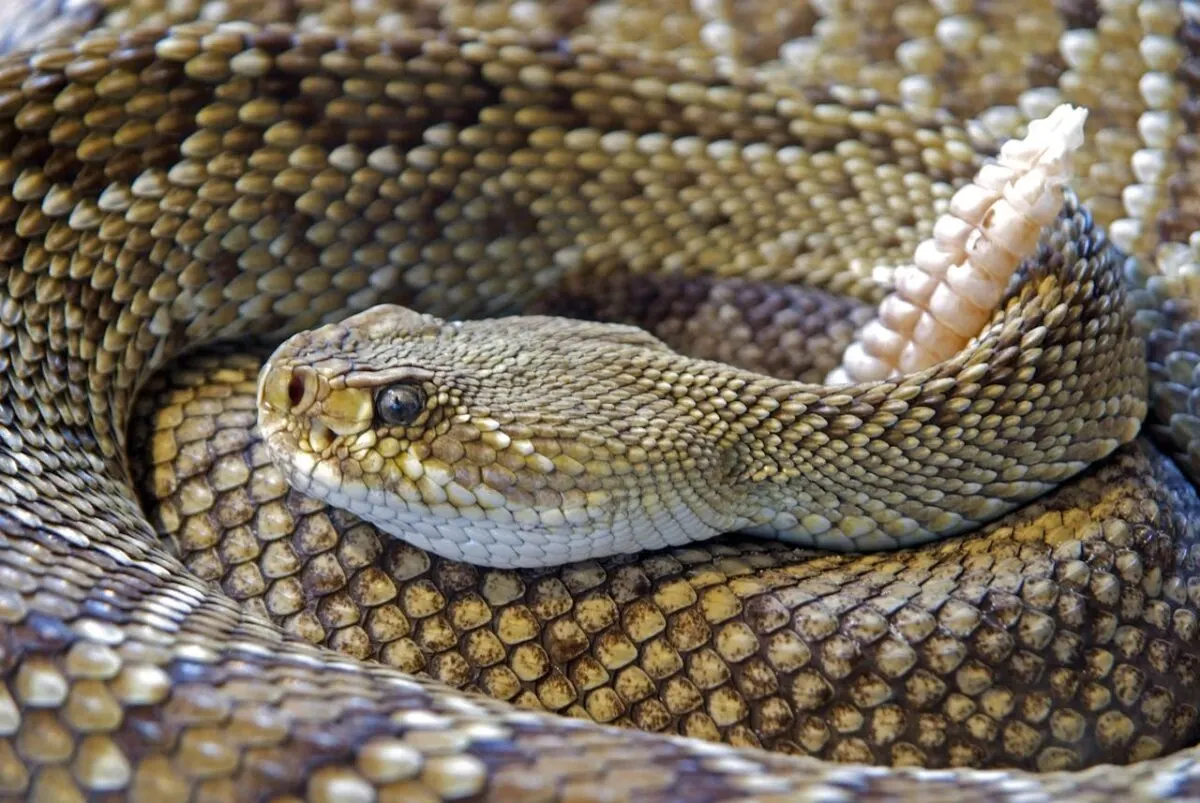You may hear their menacing rattling sound, a sound that can send shivers down a grown man’s spine, long before you see them. These long, scaly reptiles will sink their teeth and secrete their venom into their prey to subdue them, but they may also use their venom as a weapon of defense when feeling threatened. Of course, we are talking about the majestic rattlesnakes.
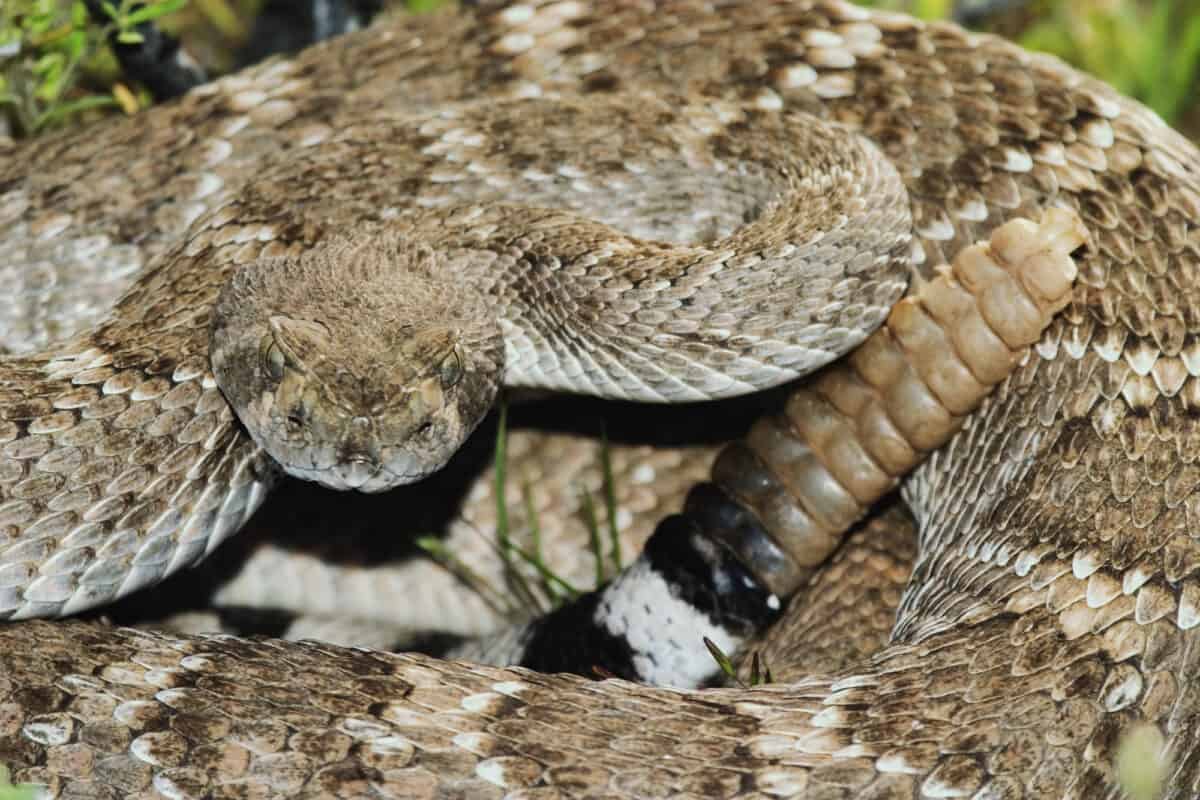
Some Quick Rattlesnake Facts
| Scientific Name | Genera Crotalus and Sistrurus |
| Class | Reptiles |
| Size | 1.6–8 ft (0.5–2.4 m) |
| Conservation Status | Some spp. in decline/endangered |
Rattlesnakes Overview
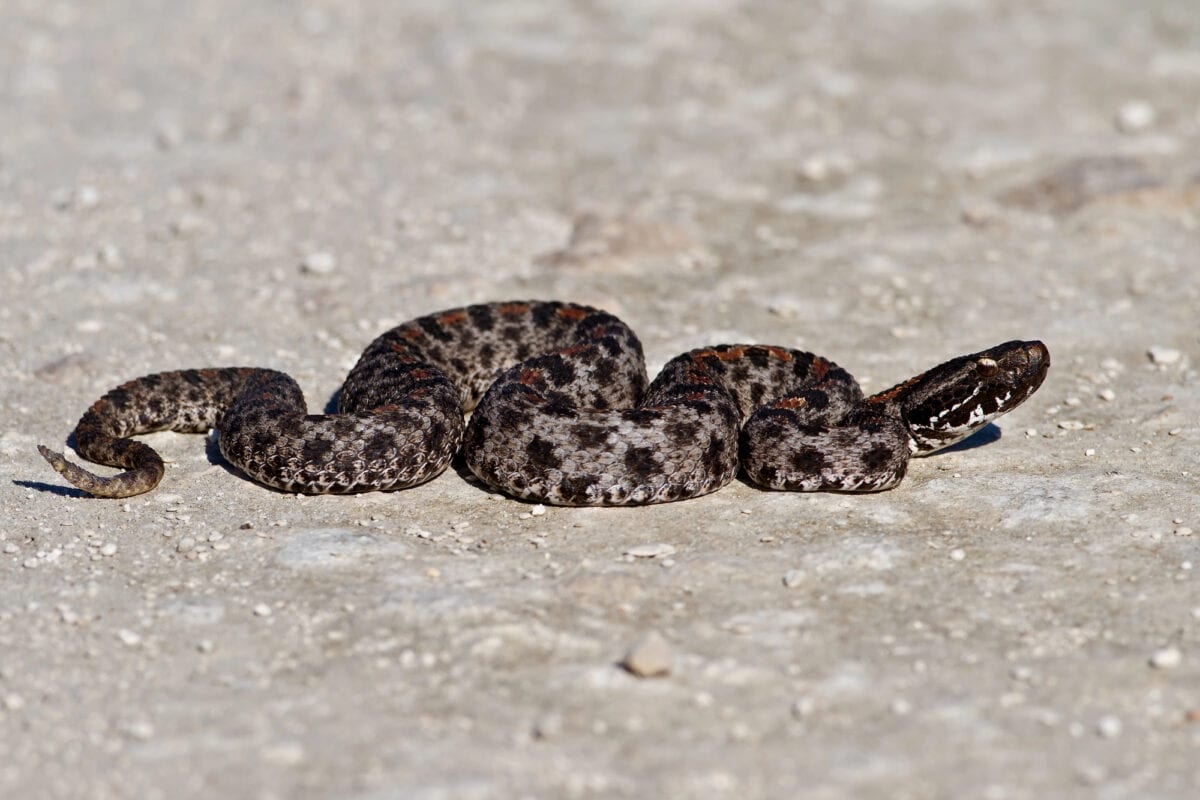
Where do they live?
There are 36 species of rattlesnakes, including 65 and 70 subspecies. Most rattlesnake species inhabit the Southwestern United States and Mexico, but they can be found as far north as Canada and as far south as Argentina. The place you will most likely encounter a rattlesnake is Arizona, where 13 different species reside.
What do they eat?
Rattlesnakes are carnivores that consume rats, mice, rabbits, squirrels, and birds, among other small to medium-sized animals. They hunt by crawling through burrows where the prey might be hiding, or they seize prey opportunistically out in the open. If their bite doesn’t kill the animal immediately, the rattlesnake will follow the scent of the animal and wait until the venom overcomes it. Then, the rattlesnake consumes the animal whole as its stomach acid is strong enough to digest both flesh and bone.
How do they reproduce?
Usually, during summer or fall months, female rattlesnakes in heat will secrete sex pheromones that males can follow using the receptors on their tongues. Once the male has found the female, he spends a few days “courting” her by rubbing her. Mating occurs in a similar manner to how humans mate. Interestingly, females can store sperm for months while she waits for better weather.
Most snakes and reptiles are oviparous, meaning they lay eggs, but rattlesnakes are ovoviviparous, meaning the females carry their young in eggs inside their bodies and give birth to live young.
Social behavior
Snakes are not known for being, particularly social creatures; however, rattlesnakes will often brumate (something similar to hibernating) in large groups in dens during the winter. Furthermore, rattlesnake mothers look after their young, and mature rattlesnakes have been found to be able to recognize family members.
Interestingly, a 2023 study found that rattlesnakes can reduce one another’s stress levels by companionship alone, suggesting that rattlesnakes have more complex social relationships than initially thought.
Rattlesnake News
The Rattlesnake’s Rattle
Rattlesnakes are so named after the little shaker at the tip of their tails, known as a rattle. A rattle comprises hollow rings made of keratin, which is the main component in hair, nails, and feathers. When the rattlesnake contracts “shaker” muscles in their tail, the rings vibrate against one another, which is what causes the rattling sound.
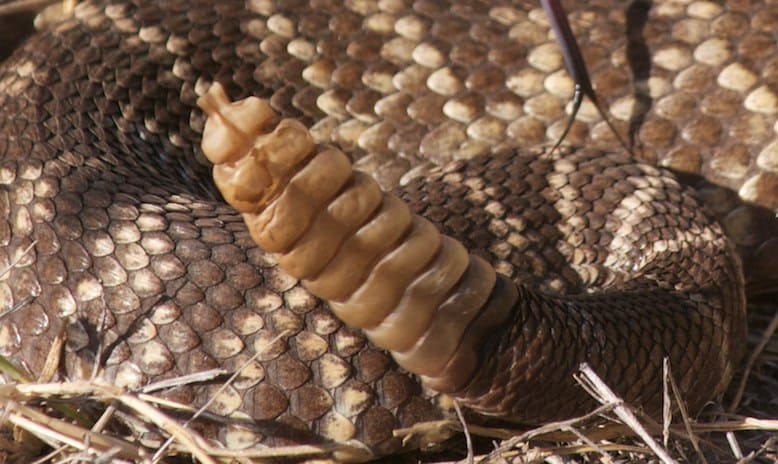
Rattlesnakes “shake” their tails as a warning signal when they feel threatened. A study found that many snakes closely related to rattlesnakes, but without rattles, also “shake” their tails when threatened, suggesting that this behavior precedes the evolution of the rattles. The rattle might have evolved as its sound functions better as a warning signal than just the tail vibration alone.
Rattlesnake Pictures – gallery module
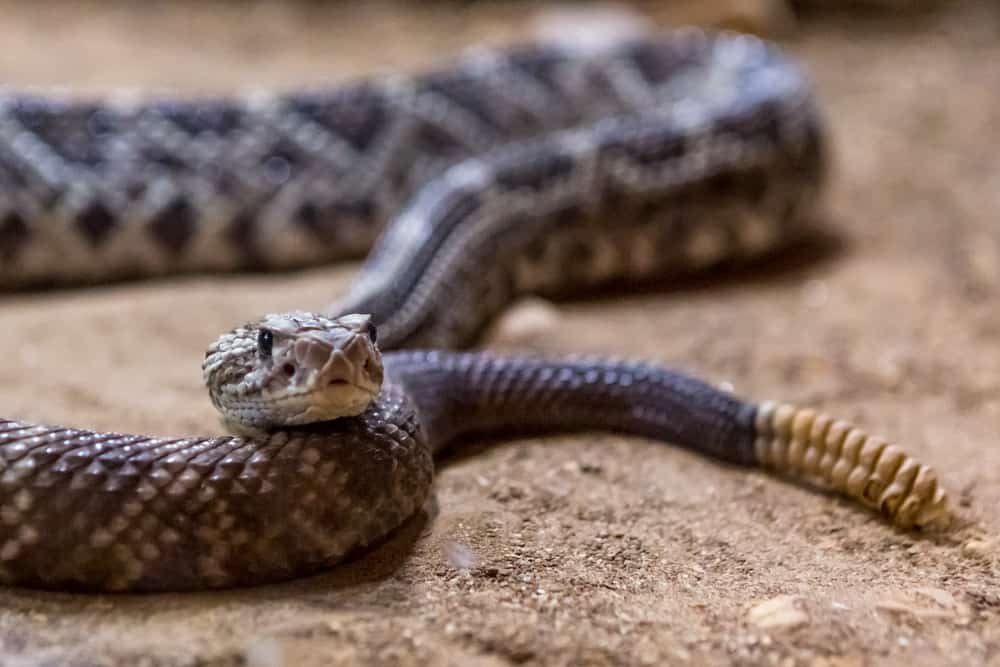
Image via Depositphotos
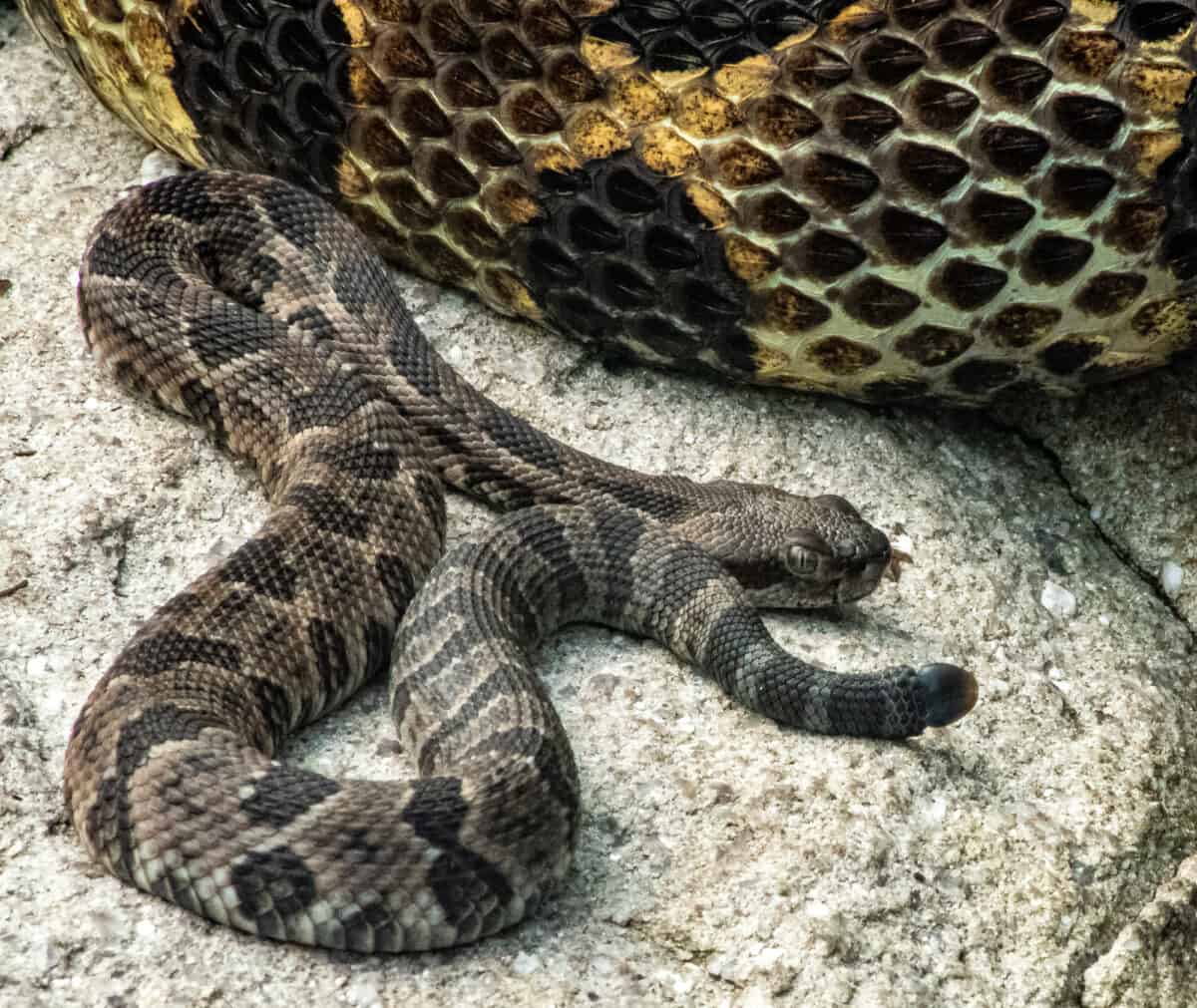
Image via Depositphotos
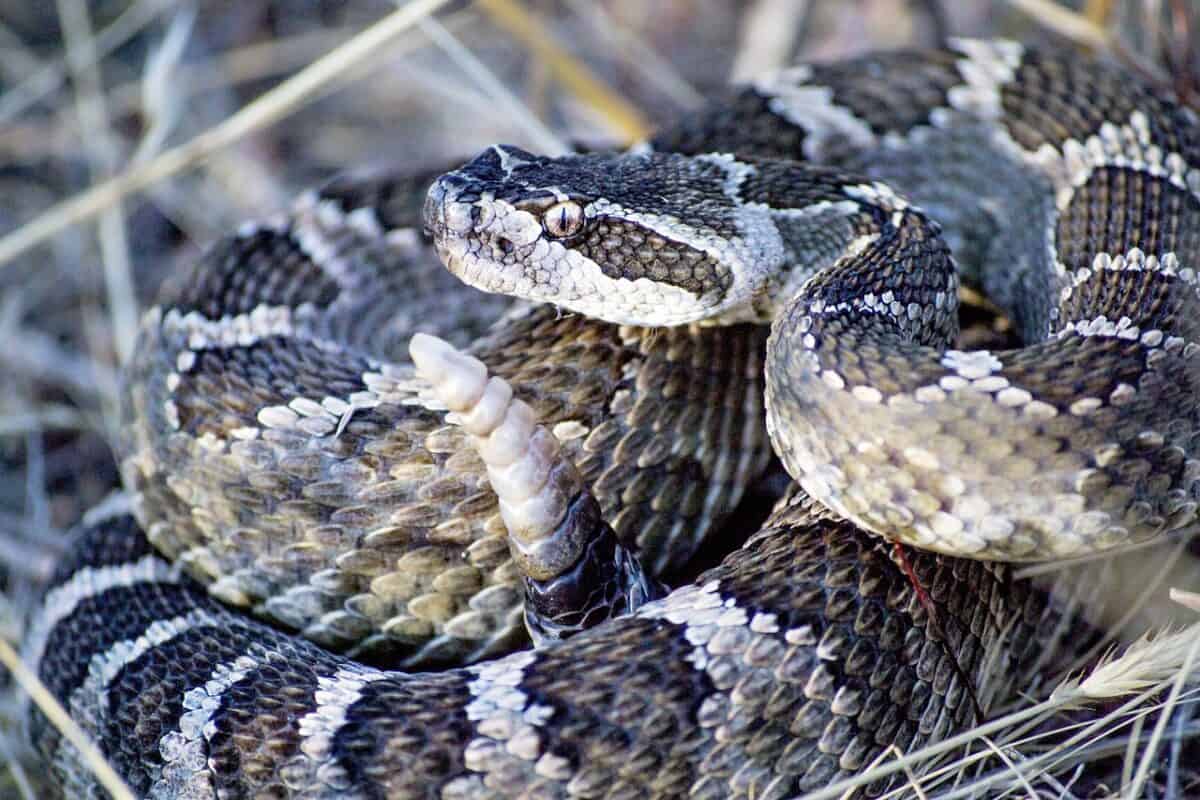
Image via Depositphotos
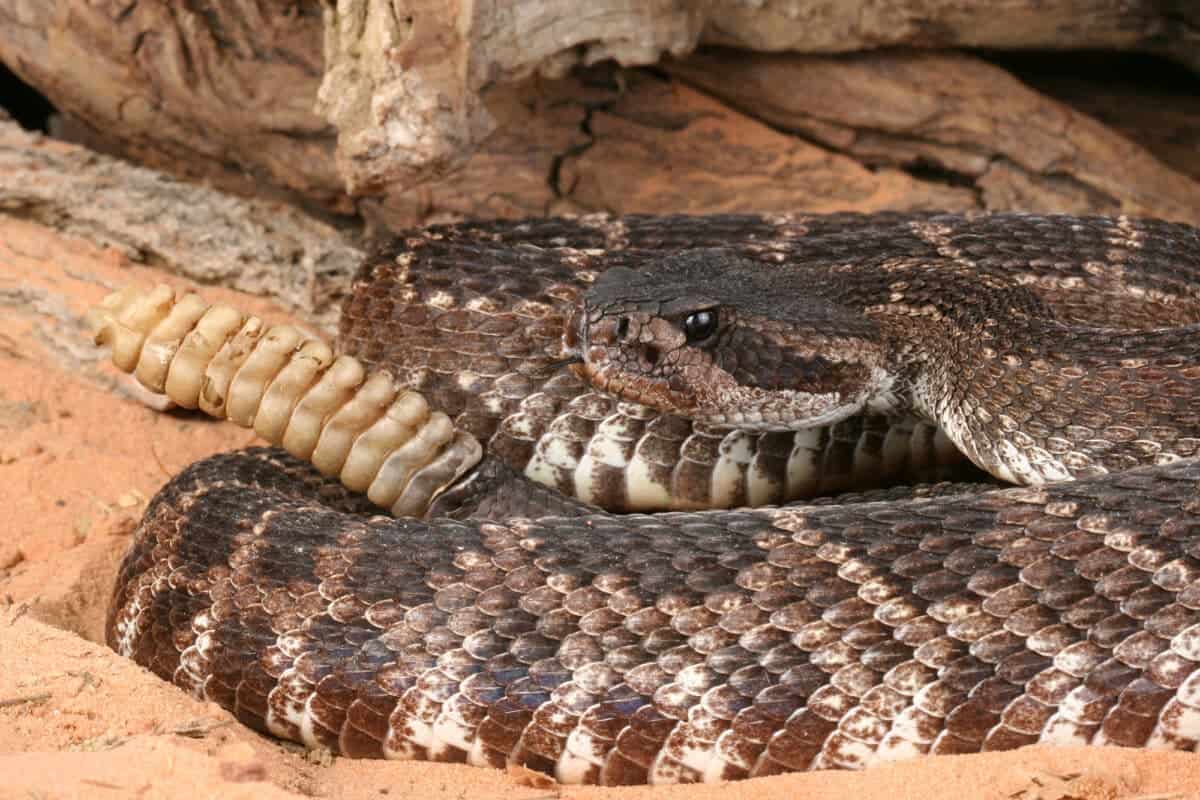
Image via Depositphotos

Image via iStockPhoto
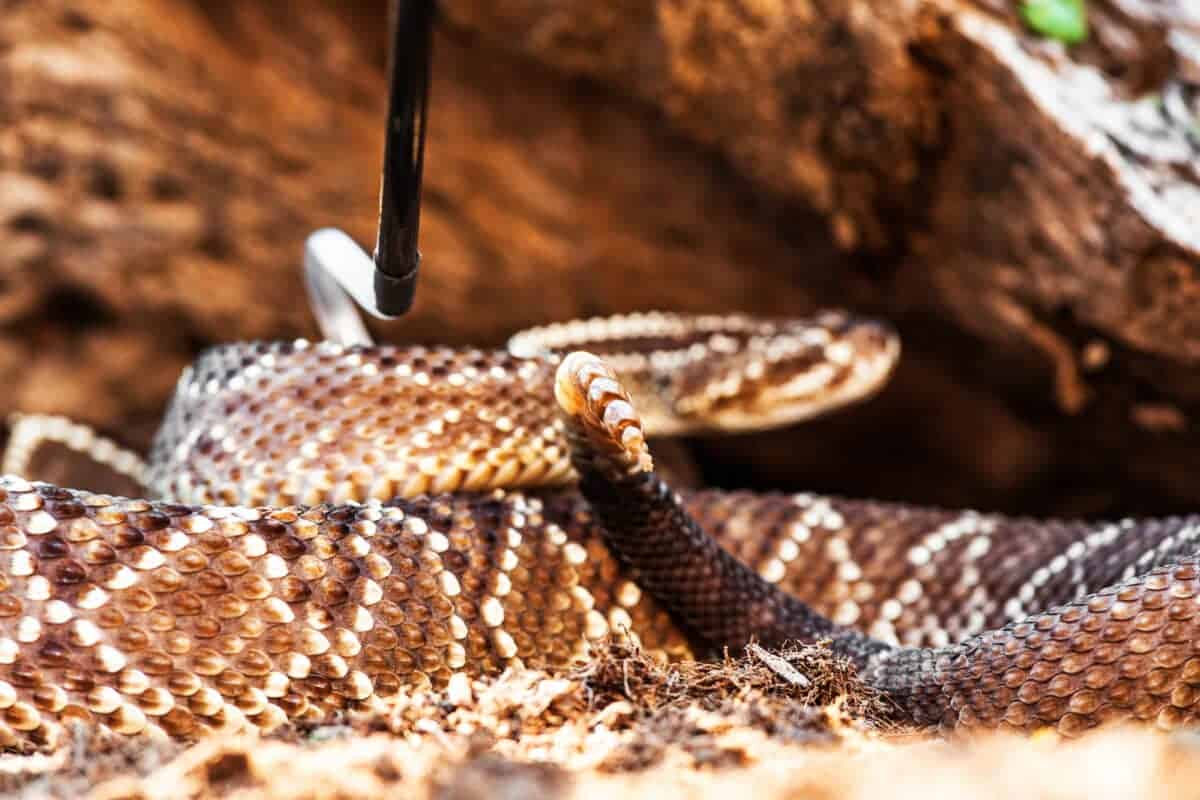
Image via Depositphotos
Rattlesnake Symbolism
Depictions of rattlesnakes have been found in Aztec and Maya murals, pottery, and other media, suggesting that rattlesnakes may have had symbolic importance in their cultures and religions. The Maya civilizations collapsed around 900 CE for reasons that have remained one of the greatest unsolved mysteries in archaeology to date. The Aztecs flourished in Central America from 1300 CE, until the Spanish conquest in 1521.
In 1754, a cartoon of a cut-up rattlesnake was used to symbolize the disunity of the “Thirteen Colonies” of the British in the “New World” of North America. Then, during the American Revolution in 1775, a yellow flag depicting a timber rattlesnake with the words “Don’t tread on me” was used to symbolize the ideals of the revolution.
Today, rattlesnakes are still used in the U.S. as symbols in the military and for political movements.
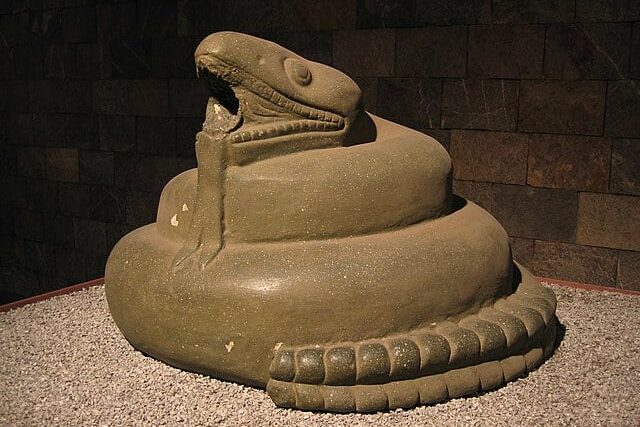


Rattlesnake FAQ
The eastern diamondback rattlesnake (Crotalus adamanteus) is the largest species of rattlesnake with an average size of 7–8 ft (2.1–2.5 m) and 5.1 lb (2.3 kg).
The pygmy rattlesnake (Sistrurus miliarius) is the smallest species of rattlesnake with an average size of 16–24 in (40–60 cm) and 5.4 oz (150 g).
The tiger rattlesnake (Crolatus tigris) is the most venomous species of rattlesnake, according to the Guinness World Records. Although it ejects a small amount of venom, its venom is highly neurotoxic and deadly.
The eastern diamondback rattlesnake (Crotalus adamanteus) has the most reported human kills in the US. This may be due to it ejecting a large amount of its venom when it attacks, more venom than what is necessary to kill a human. Antivenoms are available, but should be taken soon after a bite.
Learn More About Rattlesnakes
Have a look at our dedicated snakes page to explore more of these slithering species.
Newest Category: Rattlesnakes
- Glow-in-the-Dark Sharks & Other Fascinating Bioluminescent Fish - July 10, 2024
- Why Flamingos Are Totally Hardcore - July 3, 2024
- Nuclear Tech to Combat Poaching: Radioactive Rhino Horns - July 2, 2024

